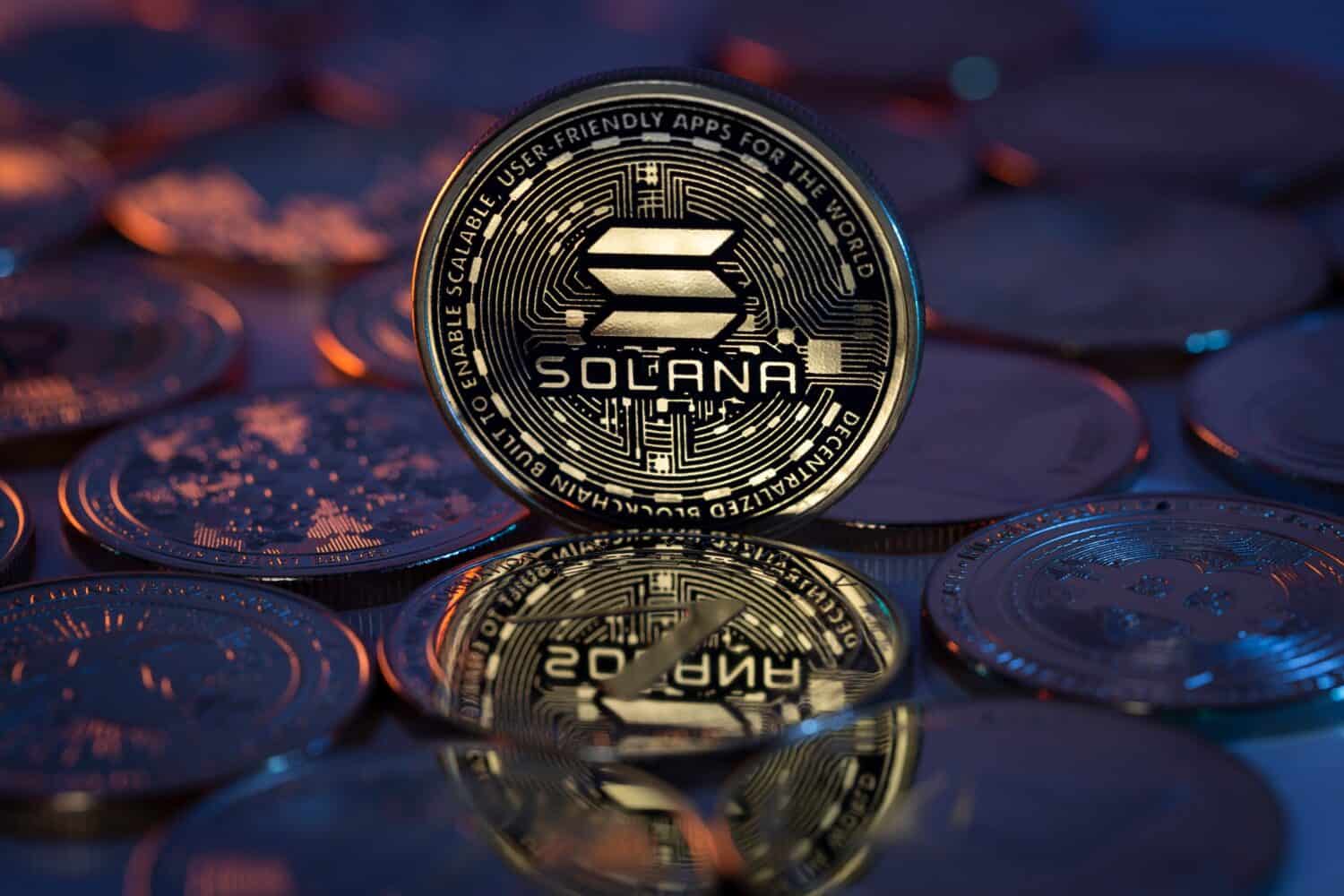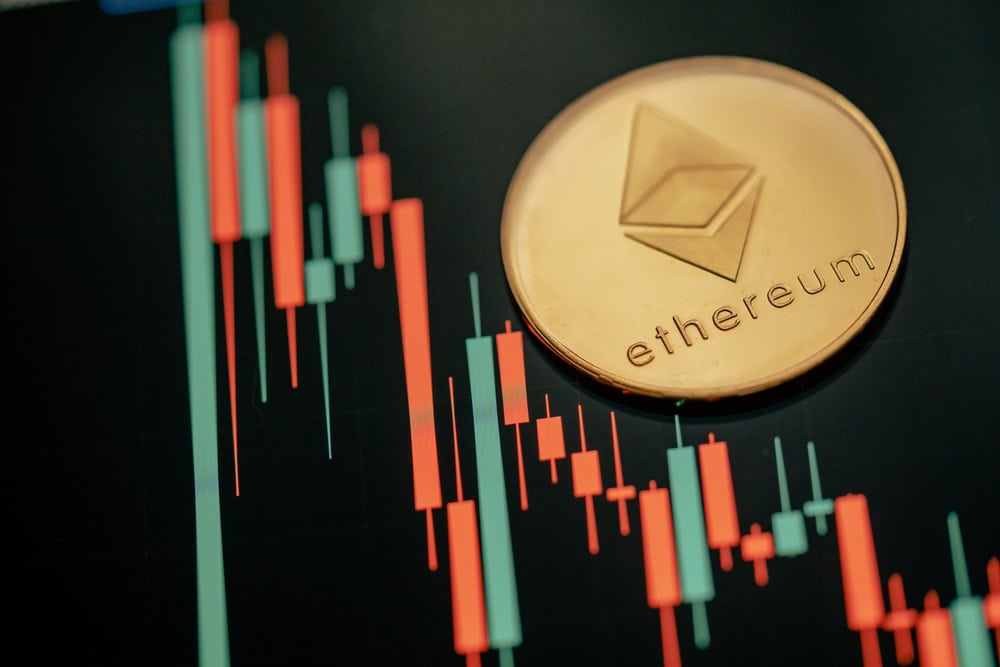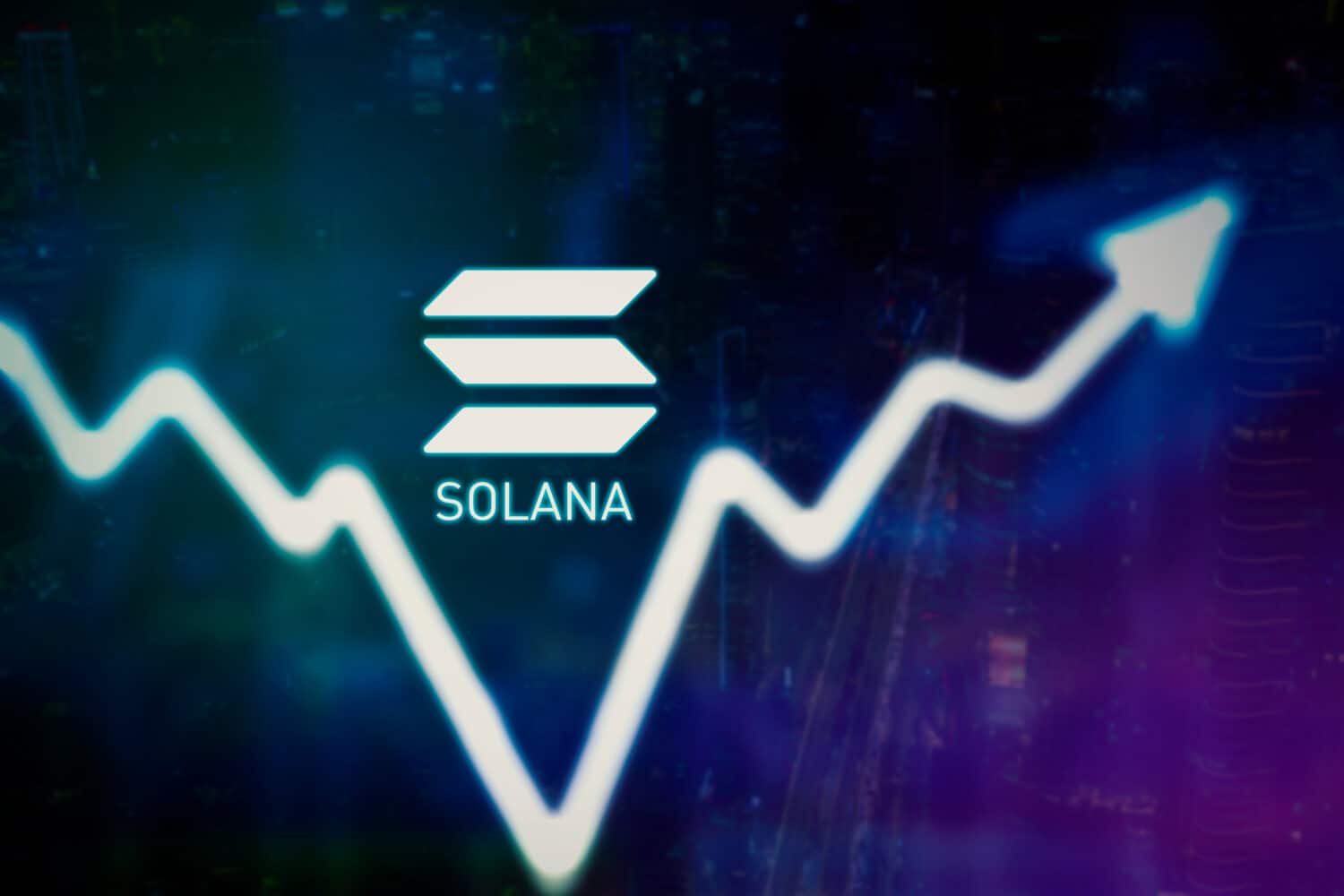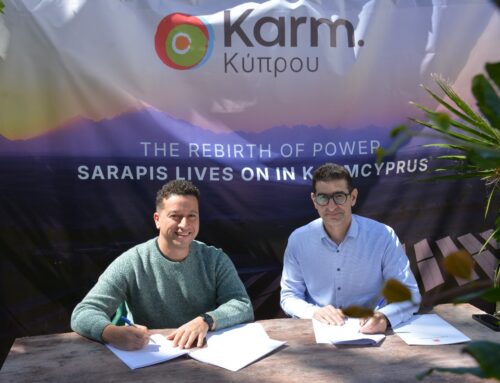Solana’s $2.85B Revenue Explosion: Why It Could Outperform Ethereum in 2026
November 24, 2025
Solana (CRYPTO: SOL) enters 2026 with rising revenue, expanding user activity, and fresh institutional interest from ETF launches. Its $2.85 billion in annual revenue demonstrates actual network usage at scale. Ethereum (CRYPTO: ETH) still commands deep liquidity and institutional trust, but its economic engine is slowing as more activity shifts to Layer 2 networks.
With Firedancer coming and Solana’s user base growing again, the gap between these networks isn’t theoretical anymore. It’s a real competition shaped by speed, revenue strength, and where investors choose to build next.
Solana Price Performance 2025: From $295 Peak to Current Consolidation

Solana opened 2025 with explosive momentum, reaching an all-time high near $295 in January before entering a six-month consolidation that tested investor conviction. The network hit that peak on January 19 as memecoin trading and DEX activity surged, pushing daily transaction volumes to record levels.
But that rally didn’t last. Solana spent February through July pulling back, eventually bottoming near $156 on July 16. That marked a 47% decline from the January peak, driven by profit-taking and broader crypto market weakness. Network fundamentals stayed strong throughout—revenues held above $150 million monthly even as SOL prices cooled.
October brought renewed interest as Solana ETF launches approached. Prices recovered to the $190-$210 range as institutional capital started flowing in. As of late November, Solana is trading between $127-$140, reflecting the market-wide selloff that hammered Bitcoin and Ethereum. Despite the pullback, Solana held critical support levels that previously marked major bottoms.
Ethereum Price 2025: August Peak to November Decline

Ethereum’s 2025 started slower but built momentum through summer, culminating in an all-time high near $4,950 on August 24. ETF inflows drove that peak, with billions flowing into spot Ethereum products as institutional interest accelerated. The rally from June’s $3,200 to August’s high showed strong conviction in Ethereum’s role as the settlement layer for Layer 2 scaling.
That confidence didn’t hold. Ethereum gave back gains steadily through fall as Layer 2 activity fragmented fee capture and Bitcoin’s weakness spread across markets. By October, Ethereum was trading in the $3,900-$4,200 range. The decline accelerated in November, pushing Ethereum toward the $2,700-$2,900 zone.
From August’s $4,950 peak to November’s $2,700 low, Ethereum has declined by roughly 45%. That’s steeper than Solana’s drawdown and reflects deeper structural concerns about how Layer 2 growth affects ETH’s value capture. Long-term holders and institutions keep accumulating, viewing the pullback as an entry opportunity.
Why Solana’s $2.85 Billion Revenue Signals Real Strength

Solana’s $2.85 billion in annual revenue tells a clear story: people are using the network at scale and paying for it. Nearly half that revenue came from trading and DEX activity, with the rest split among swaps, NFTs, priority fees, and memecoin volume that stayed elevated even after sentiment cooled.
This revenue mix demonstrates actual network usage, not speculative hype. High-frequency traders prefer Solana because it settles fast and costs almost nothing. Even after the January memecoin spike faded, the network held $150-$250 million in monthly fees, proving usage didn’t collapse once the frenzy ended.
Strong revenue feeds back into staking rewards. Validators earn from real activity, not complex fee layers. Higher staking yields attract more validators, which improves network security and keeps the ecosystem healthy. For investors, this is what matters: Solana isn’t just busy. It’s earning, and the numbers back that up.
Solana vs Ethereum 2025: Four Key Performance Differences

Solana and Ethereum serve different markets now. Solana targets speed and retail flow while Ethereum leans on security and institutional structure. Here’s why their gap keeps widening.
Throughput and Network Design
Solana’s monolithic design and Proof of History mechanism enable rapid execution and sub-second confirmations. It handles high-frequency trading, liquidations, and memecoin launches easily. Ethereum’s modular roadmap accepts slower base-layer execution in exchange for decentralization. Activity spreads across Layer 2 networks, creating a fragmented experience that can’t match Solana’s raw speed.
User Flow and On-Chain Culture
Solana processes over 3 million daily active addresses trading memecoins, NFTs, and DeFi tokens. Low fees make constant participation possible. Ethereum hosts $50 billion in DeFi total value locked across protocols like Aave, Uniswap, and MakerDAO, but retail users avoid mainnet due to high costs. They rely on Layer 2s instead, weakening Ethereum’s cultural pull.
Developer Momentum
Solana’s developer ecosystem keeps expanding, especially in gaming, NFTs, and consumer apps. Rust-based tooling creates a tight-knit builder community that tends to stay on Solana. Ethereum still has the largest overall developer base, but it’s stretched thin across dozens of Layer 2 networks, slowing unified progress and diluting ecosystem focus.
Economic Capture and Incentives
Solana channels fees directly to validators and stakers, strengthening incentives and keeping the network responsive to demand. Ethereum’s fee capture is diluted. Layer 2 sequencers, builders, and staking services collect much of the revenue, leaving validators with a smaller share. This weakens the connection between Ethereum’s usage and ETH’s economic value.
Solana ETF Launches Drive Institutional Interest in Late 2025

Bitwise launched the first U.S. spot Solana ETF on October 28, 2025, marking a turning point for institutional access to SOL. The Bitwise Solana Staking ETF (BSOL) attracted $57 million in first-day volume, the highest among 2025 ETF launches. Grayscale followed the next day with its converted Solana Trust ETF (GSOL), and together they accumulated over $380 million in net inflows within three weeks.
VanEck, Fidelity, and Canary Capital entered the market in mid-November, adding competition and driving fees toward zero through introductory waivers. This wave of launches created multiple regulated pathways for traditional investors to gain Solana exposure while earning staking yields—something retail traders had accessed for years but institutions couldn’t touch through standard brokerage accounts.
Ethereum’s ETF story moved differently. Its biggest inflows came earlier in 2024-2025, and by late 2025, enthusiasm had cooled as investors realized Ethereum’s modular structure limits direct Layer 1 revenue capture. ETF flows continued but felt more like portfolio rebalancing than fresh conviction. Where Solana ETFs are gaining momentum, Ethereum ETFs have settled into maintenance mode.
Solana Price Prediction 2026: Bullish, Base, and Bearish Scenarios
Solana enters 2026 with rising revenue and heavy activity, while Ethereum leans on liquidity and institutional trust. With ETFs, Layer 2 growth, and Firedancer coming, both networks face shifting conditions that could reshape their trajectories.
Bullish Prediction
Solana pushes into a new growth phase as Firedancer rolls out smoothly and boosts throughput enough to support heavier trading and retail activity. Institutional inflows rise as ETFs scale, while daily users return to over 5 million.
Ethereum benefits from stronger Layer 2 demand, even if mainnet fees stay low. With Bitcoin recovering toward six figures, sentiment lifts the entire market. Under these conditions, SOL could push into the $250-$340 range while ETH trades near $4,200-$5,000 as institutional confidence returns.
Base Prediction
Both networks settle into a steady rhythm. Firedancer launches but arrives later or with fewer performance gains than expected. Solana ETFs continue to attract measured inflows, but retail activity grows in cycles rather than surges.
Ethereum’s Layer 2 ecosystem continues to expand without a clear winner, keeping activity spread out but stable. With macro conditions mixed, neither chain pulls ahead decisively. SOL holds between $190-$230, and ETH trades around $3,400-$3,800 for most of the year.
Bearish Prediction
Solana faces setbacks if Firedancer slips behind schedule or early versions struggle under load. Regulatory pressure on memecoin platforms cuts into the network’s most active segment, slowing transaction volume.
Ethereum faces deeper Layer 2 fragmentation and weaker fee capture as institutions grow cautious. Bitcoin weakness around the $50,000-$60,000 range spills into altcoins, reducing appetite for risk. In this environment, SOL drifts toward $130-$160 while ETH falls into the $2,600-$2,900 range as investors wait for clearer signals.
Search
RECENT PRESS RELEASES
Related Post




